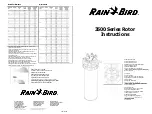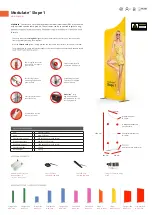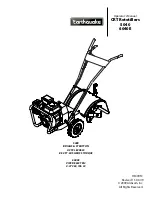
7
HARS-LX Series
7
operation
Dial Setting
4.4
The resistance setting may be read directly from the
dial settings whenever the dials are in positions 0-9.
For additional flexibility and range, each decade
provides a “10” position setting. This “10” position
on any one decade equals the “1” position on the
next higher decade if any. It adds about 11 % to the
nominal total decade resistance. The most signifi
-
cant decade also has an “11” position to extend the
resistance range to over 1.2 M
Ω
. The l0 m
Ω
decade,
however, does not go below the “ 1 “ position in
order to maintain a precise and constant minimum
resistance of 10 m
Ω
, so that no subtraction of zero
resistance is required.
To determine the resistance obtained when any one
or more “10” or “11” settings are used, simply add 1
to the next higher decade. For example, a setting of
“10-11-10-10-10-10-1-10” becomes:
10
1 0 0 0 0 0. 0 0 0
11
1 1 0 0 0. 0 0 0
10
1 0 0 0. 0 0 0
10
1 0 0. 0 0 0
10
1 0. 0 0 0
10
1. 0 0 0
1
. 0 1 0
10
. 0 1 0
Total
1 1 2 1 1 1. 0 2 0
In order to obtain a zero in the l0 m
Ω
position, set
the l0 m
Ω
decade to the “10” position, i.e. l00 m
Ω
,
and take the l00 m
Ω
setting, in the next decade, into
consideration. To get 1.000
Ω
, for example, the
switches should be set to show “0.-9-10-0”.
Since the highest decade has an additional “11” po-
sition, resistance values of over 1.2 times nomianl
maximum value can be obtained.
power Considerations
4.5
To maintain the maximum possible accuracy and pre-
cision, power applied to the HARS-LX should be kept
as low as possible, preferably below 0.1 W. For best
protection of the instrument, it is advisable to limit
the input power to 1 W. This may be implemented
with a series resistor or fuse.
environmental Conditions
4.6
For optimal accuracy, the decade box should be used
in an environment of 23ºC. It should be allowed to
stabilize at that temperature for at least four hours
after any significant temperature variation.
Humidity should be maintained at laboratory condi-
tions of 30% to 70% RH.
Switch Conditioning
4.7
The switch wipers employed in this unit are self
cleaning. They have solid silver alloy contacts.
After beingleft idle, the wipers and contacts must
be conditioned or “broken in” again to remove the
film of silver oxide that develops over time. This is
standard metrology practice when high accuracy is
required. This effect is of the order of less than 1 m
Ω
,
so it may be ignored whenever measurements of that
magnitude are not important.
To perform this
“breaking in,” simply rotate each
switch seven to ten times in each direction.






































